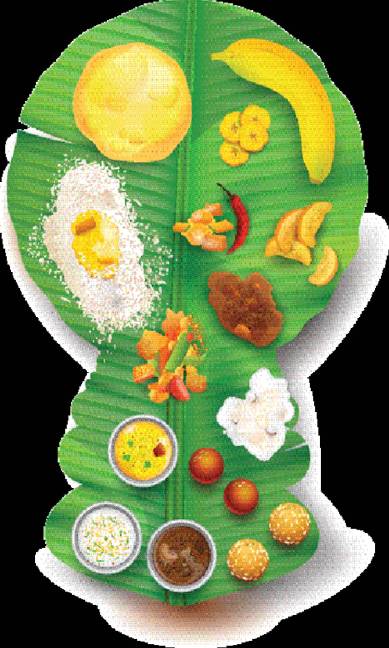📣 For more lifestyle news, click here to join our WhatsApp Channel and also follow us on Instagram
God’s Own Platter
The Onasadya or the Onam feast is a celebration of plenty, laying out Kerala’s diversity on a banana leaf.

There’s a Malayali proverb that goes, “Kaanam vittum onam unnanam”. A rough translation to English would be, “One must feast during Onam, even if it means selling one’s land”. It shows how important the Onam feast — Onasadya — is to a proper celebration of Kerala’s biggest festival. According to legend, Onam is celebrated to mark the annual visit of Mahabali, or Maveli, when the king returns to Kerala from the netherworld to see how his people are faring. This is why Malayalis feast on Onam, so that they can assure their beloved king that all is well with them.
monthly limit of free stories.
with an Express account.
Malayali or not, the annual Onasadya is a must on the list of every self-respecting gourmand. The array of food items lined up on a fresh, clean plantain leaf, is a sight — and fragrance — that few can resist. The number of items in the sadya can vary depending on where one is partaking in the feast; certain eateries may serve upto 65 dishes, whereas in many others and in most Malayali homes, the average number of dishes hovers at a modest 20. “Some restaurants and caterers like to include non-traditional items like puri and chhole to woo north Indian customers,” says Shiva Subramnaniam of Shree Dharma Saastha Caterers in Navi Mumbai, adding, “But we think it’s best to stick to the traditional items only.”
The Onasadya is also a showcase for secularism and diversity of Kerala. Onam, after all, is really a harvest festival, when the farmers of the land — whatever their religious beliefs — celebrate the agricultural bounty they would reap after the monsoon has ended. Therefore, vegetables of all sorts — yams, drumsticks, pumpkim, madras cucumber, beans, white gourd — necessarily feature heavily in the feast, but other details could vary depending on geography. For instance, in northern districts like Kasargod, Kannur and Kozhikode, fish and meat can be included in the sadya. In most other parts of Kerala, the sadya is strictly vegetarian. According to Chef Saji Alex, Chef de Cuisine at Kochi Marriott, in certain Brahmin communities, even onion, garlic and red chilli powder are traditionally excluded from the preparations. “They tend to rely more on ginger and green chillies, or spices like black pepper, as well as plenty of ghee, for the flavouring,” he says.
Rasam is served after this, as it aids in digestion, says Subramaniam. The sweet items — pradhamans — are eaten at this point. There are usually at least two, one milk based and one jaggery based. After all this, comes a bit of curd rice or buttermilk. This too, is meant to aid digestion. The end of a satisfying meal is signalled by the folding of the leaf, either towards oneself or away — in this also, the convention varies according to geography. It should come as no surprise that this humungous meal clocks in 2,500 calories. “Besides having a light breakfast, be prepared to have a light dinner or skip it altogether,” says Alex. A fine way, in other words, to convince Maveli that his people are doing very well indeed.
📣 For more lifestyle news, click here to join our WhatsApp Channel and also follow us on Instagram